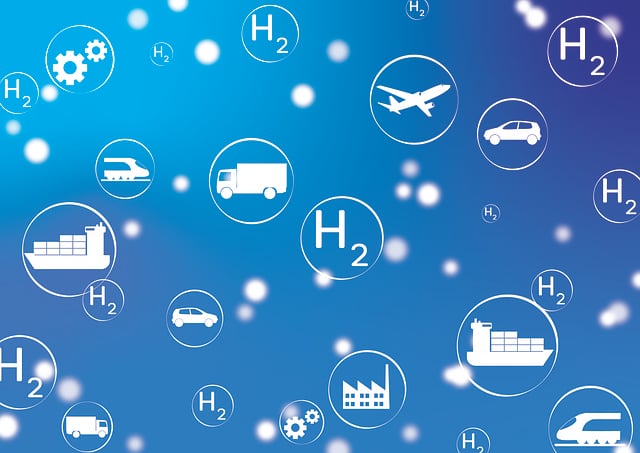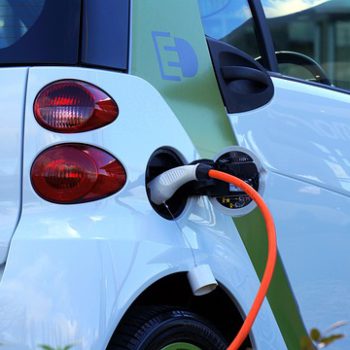|
|
Hydrogen would be a 100% eco-friendly fuel if not for a few issues. The primary challenge is its extraction. Earth’s hydrogen reserves are scarce. While hydrogen can be produced from water, it requires resources and energy, which is where complications arise.
Hydrogen’s Reaction with Air
When hydrogen (H) burns in air (containing oxygen, O), it simply forms water (H2O). A kilogram of burned hydrogen provides almost four times more energy than a kilogram of liquid fuel, like gasoline. However, sourcing it is a challenge since its deposits on Earth are limited, occasionally accompanying natural gas reserves.
Why Is There So Little Hydrogen Underground?
Billions of years ago, some of Earth’s hydrogen reacted with nitrogen to form ammonia, while some combined with carbon to produce methane. Both later formed organic compounds. Interestingly, most of today’s hydrogen production is used to make ammonia – a crucial precursor for nitrogen fertilizers.
The remaining unbound hydrogen quickly escaped into space. Being the lightest gas, it easily eludes Earth’s gravitational pull. A similar issue exists with helium, another light gas with limited reserves on Earth.
Hydrogen can be produced from water, which is abundant on Earth. However, this process requires resources and energy. The challenge begins with “dirty” hydrogen from natural gas.
“Dirty” Hydrogen from Natural Gas
Hydrogen can be derived from methane (from natural gas) or other hydrocarbons (like petroleum) through a process called reforming. This high-temperature process also requires energy, either electric or from fuel combustion.
During reforming, carbon monoxide is produced: CH4 + H2O → CO + 3 H2. This carbon monoxide is later converted to carbon dioxide and more hydrogen: CO + H2O → CO2 + H2.
CH4 + H2O → CO + 3 H2 Translates to: Methane + Water = Carbon Monoxide + Dihydrogen
CH4 + H2O = CO + H2 is a Double Displacement (Metathesis) reaction where one mole of Methane [CH4] and one mole of Water [H2O] react to form one mole of Carbon Monoxide [CO] and three moles of Dihydrogen [H2]

However, this method of hydrogen extraction is not ideal. It’s energy-intensive, requiring steam at a minimum of 360°C. Moreover, the process emits carbon dioxide, a greenhouse gas we aim to reduce.
Until we find efficient ways to manage this carbon dioxide, reforming remains an inefficient method for hydrogen production. It’s certainly not eco-friendly. Hydrogen produced this way is often termed “gray” to distinguish it from the eco-friendly “green” hydrogen.
Electrolysis: Hydrogen from Water
Hydrogen can also be produced from water through electrolysis, breaking it down using electric voltage. Current methods have an efficiency of about 70-80%. To produce one kilogram of hydrogen (providing around 40 kilowatt-hours), approximately 50-55 kilowatt-hours of electric energy is needed.
Again, if the energy source is coal, oil, or gas-based, the resulting hydrogen isn’t eco-friendly. Despite the rapid growth of renewable energy sources in recent decades, only about 1% of hydrogen production is green. A staggering 95% of global hydrogen production comes from reforming natural gas or petroleum.
Astute readers might notice a remaining 4% of production. This hydrogen comes from other, often non-eco-friendly sources. Some capture carbon dioxide (termed “blue” hydrogen), some use nuclear energy (sometimes called “purple” or “pink”), and a rare type comes from deposits accompanying natural gas reserves (sometimes termed “gold”).
The Chicken and Egg Dilemma: Consumers and Infrastructure
Returning to electrolysis-produced hydrogen, fewer obstacles remain to produce “green” hydrogen using renewable energy sources like solar or wind.
Regardless of whether solar cell production and installation are supported or carbon dioxide emissions are taxed, by 2050, solar energy is predicted to be the dominant energy source, according to analysts who recently published their findings in “Nature Communications”. This transition can be accelerated by adapting energy networks to decentralized production and investing in energy storage.
However, there’s a catch. As Keith Wipke, the fuel cell project leader at the U.S. National Renewable Energy Laboratory, told “Science” magazine, hydrogen as a fuel faces a “chicken and egg” problem. Production won’t scale up without consumers, and consumers won’t emerge without a steady, affordable hydrogen supply.
Other experts add – and this is the hopeful part – that the same was true for renewable energy. Initially scarce and expensive, it became cheaper as production increased, attracting more buyers.
Regardless, this is how the free market operates. Sometimes, though, it needs a nudge.
USA Invests Billions in Hydrogen
The United States plans to do just that. On October 13, 2023, Joe Biden’s administration announced a $7 billion investment to build seven regional hydrogen “hubs”, primarily for road freight transport, as trucks are challenging to electrify.
Hydrogen could also power energy-intensive industries like fertilizer and steel production. Funded by the Department of Energy, these hubs aim to transition away from reforming. They’ll connect hydrogen producers and consumers and support infrastructure development, like pipelines and tanks.
Watch and learn about clean and green hydrogen production to help decarbonize our world. Jim Leidel DTE Gas james.leidel@DTEenergy.com
The Biden administration has another goal in mind. Industrial hydrogen production facilities are expensive, with equipment delivery taking 2-3 years. Increased hydrogen demand should lower prices and improve availability. Additionally, residents living near major highways, which transport most goods in the USA, should benefit from reduced emissions.
However, the plan isn’t flawless. Not all hubs will produce hydrogen through electrolysis. Those far from coastlines will derive it from methane reforming, capturing the resulting carbon dioxide. This means the hydrogen won’t be “green”, but “blue”, raising concerns among scientists and environmentalists. Methane, which often leaks from facilities, is a much more potent greenhouse gas than carbon dioxide.
Tax breaks will only support eco-friendly hydrogen producers (green and blue). Analysts believe this could push the price of eco-friendly hydrogen below a dollar per kilogram, making non-eco-friendly hydrogen (from reforming without CO2 capture) more expensive and obsolete.
The White House press office estimates that the entire program will attract $40 billion in investments and create tens of thousands of jobs.
Hydrogen: High-Pressure Fuel
Eco-friendly hydrogen might be the fuel of the near future. By mid-century, most energy will likely come from renewable sources, making hydrogen a potential eco-friendly fuel.
Hydrogen has the highest energy-to-weight ratio of all fuels. Only nuclear fuels contain more energy per unit of weight.
However, it has its drawbacks. While a kilogram of hydrogen holds about 40 kilowatt-hours of energy, it occupies 11 cubic meters. To make hydrogen practical as a fuel, it needs to be stored under pressure.
This introduces another issue: compressing gas consumes significant energy. Hydrogen-fueled vehicles typically use pressures of 350 bars (35 megapascals) or even double. This is much higher than other gases (e.g., LPG tanks have about 4 bars), necessitating better safety measures.
Tanks designed for high pressures usually weigh much more than the hydrogen they contain (typically, only about 5-6% of the total weight is the gas). However, physics can’t be ignored: a kilogram of burned hydrogen provides 40 kWh of energy, while liquid fuels like gasoline and diesel offer almost four times less, around 12 kWh.
Hydrogen from… Powder?
There’s another method worth mentioning.
Years ago, it was discovered that gallium forms an alloy with aluminum (AlGa). Extremely brittle, it’s practically useless. Interestingly, carrying gallium on an airplane is prohibited due to potential damage it could cause upon contact with the aluminum hull.
However, this alloy has a unique property. Normally, aluminum doesn’t react with water due to an oxide layer on its surface. Gallium prevents this layer from forming, allowing aluminum to react with water, producing aluminum hydroxide and hydrogen. In 2022, scientists from the University of California, Santa Cruz (UCSC), refined this method, determining the best aluminum-gallium ratios and grinding the alloy particles. They were thrilled to see “hydrogen bubbles emerging like crazy.”
Aluminum is a common element, and the resulting aluminum hydroxide decomposes at 180°C into aluminum and water. While gallium is rarer and more expensive, it doesn’t participate in the reaction and can be easily recovered. The water for this reaction can come from any source, even wastewater.
Could this make hydrogen cheaper and more accessible? UCSC scientists, who patented this method last year, certainly hope so.
It’s not entirely out of the question that one day we might pour water into our tanks, where, in reaction with aluminum granules, hydrogen will form and power the engine. Scientists from Purdue University proposed a similar idea back in 2007 (and also patented it).
Conclusion:
The potential of hydrogen as a clean fuel source is evident, but challenges remain in its production, storage, and distribution. While the U.S. and other nations are investing heavily in hydrogen infrastructure and research, the transition to a hydrogen economy will require continued innovation and market adaptation.
FAQ:
- What is the primary challenge with hydrogen as a fuel?
- The main challenge is sourcing it, as Earth’s hydrogen reserves are limited.
- How is “dirty” hydrogen produced?
- It’s derived from methane or other hydrocarbons through a process called reforming, which emits carbon dioxide.
- What is the difference between “green” and “gray” hydrogen?
- “Green” hydrogen is eco-friendly, usually produced through electrolysis using renewable energy. “Gray” hydrogen is produced through methods that aren’t environmentally friendly, like reforming.
- Why is the U.S. investing in hydrogen?
- The U.S. sees hydrogen as a potential clean energy source, especially for sectors hard to electrify, like trucking. The Biden administration’s investment aims to boost hydrogen production, reduce costs, and create jobs.
- What are the challenges with storing hydrogen?
- Hydrogen needs to be stored under high pressure, which requires energy. The tanks designed for this purpose are heavy, often outweighing the hydrogen they contain.












